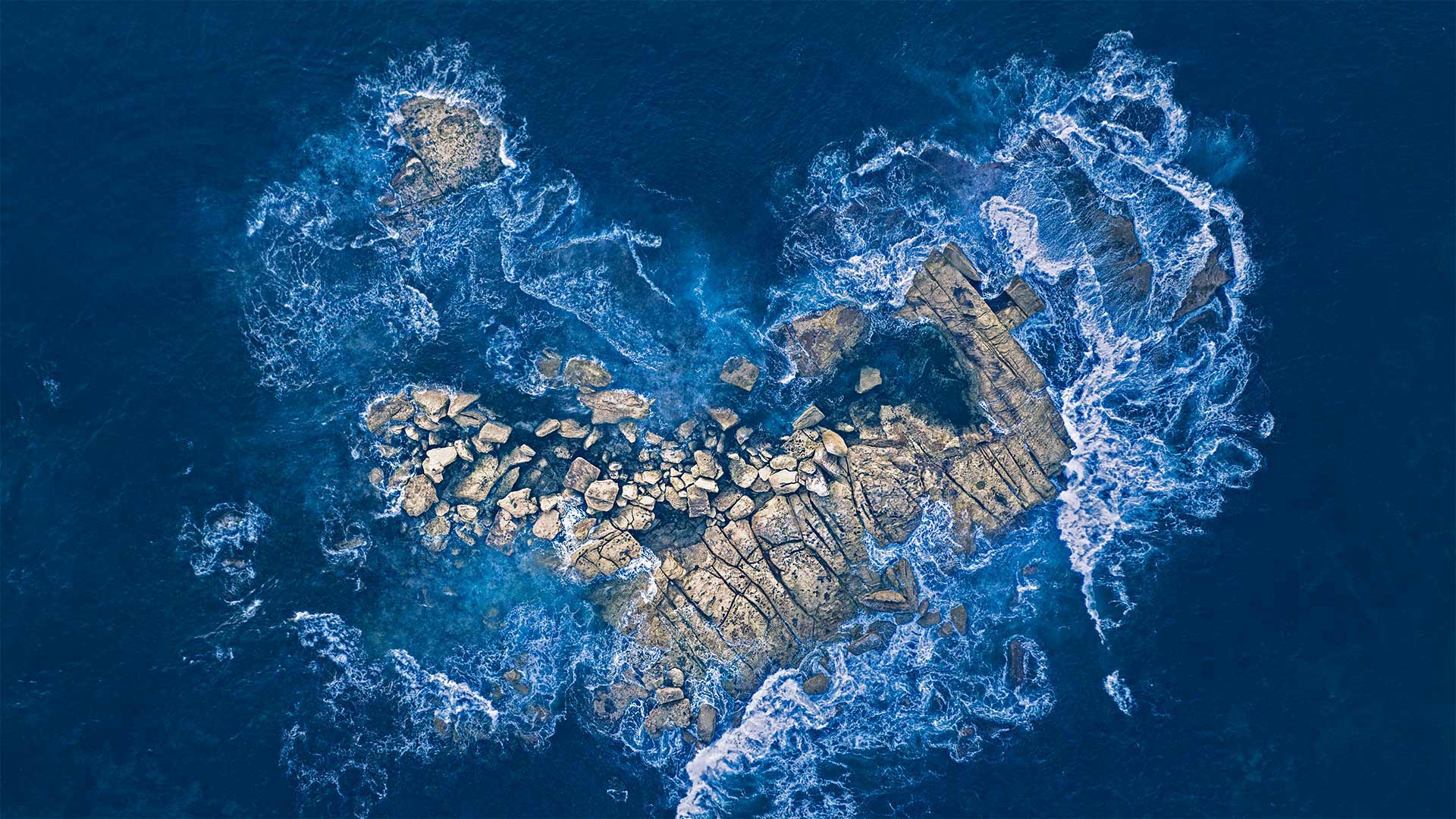海浪冲击着悉尼海岸的一个心形岩石岛,澳大利亚 Ocean waves crashing over a heart-shaped rock island off the coast of Sydney, Australia (© Kristian Bell/Getty Images)

海浪冲击着悉尼海岸的一个心形岩石岛,澳大利亚 Ocean waves crashing over a heart-shaped rock island off the coast of Sydney, Australia (© Kristian Bell/Getty Images)
An oceanic Valentine
Just off the coast of Sydney, in New South Wales, Australia, the surf crashes over this cluster of rocks, sending an oceanic Valentine's Day card to a lucky bird—or photographer—flying overhead. We'll take nature's love letters wherever and whenever we can find them. But what makes February 14 the day we celebrate love? Some claim Valentine's Day has its roots in an ancient Roman fertility festival called Lupercalia that included goat sacrifices and a lottery that paired off eligible men and women. Others argue that the holiday began with Christians celebrating a martyr named Valentine. Chaucer romanticized the day with a poem about two birds mating for life. No matter its pagan or Christian origins, in the modern world, Valentine's Day is celebrated most everywhere as a day devoted to love.
海洋情人节
就在澳大利亚新南威尔士州悉尼海岸附近,海浪冲过这片岩石群,给头顶飞过的幸运鸟或摄影师送去了一张海洋情人节贺卡。无论何时何地,我们都会带着大自然的情书。但是,是什么让2月14日成为我们庆祝爱情的日子呢?有人说情人节起源于古罗马的生育节,叫做Lupercalia,包括山羊祭祀和抽奖,抽奖的对象是符合条件的男女。另一些人则认为,这个节日始于基督徒庆祝一位名叫瓦伦丁的烈士。乔叟用一首关于两只鸟一生交配的诗把这一天浪漫化了。无论是异教或基督教的起源,在现代世界,情人节是庆祝作为一个致力于爱的日子最无处不在。